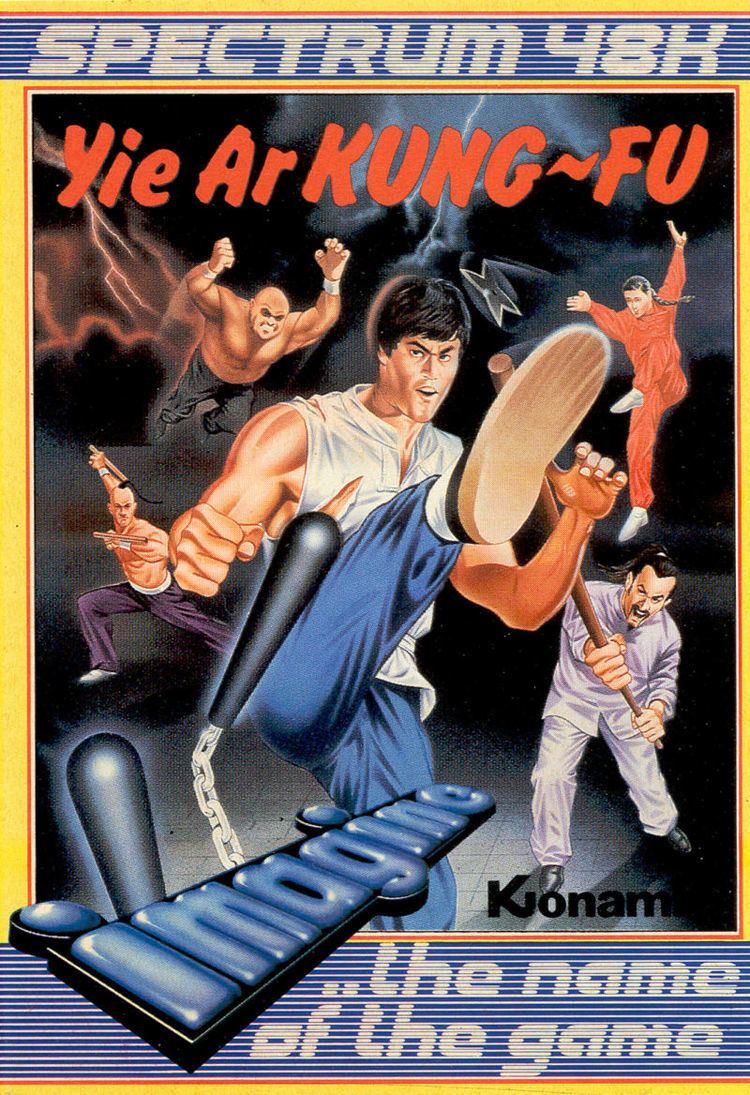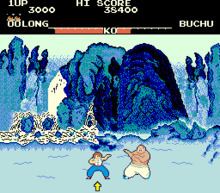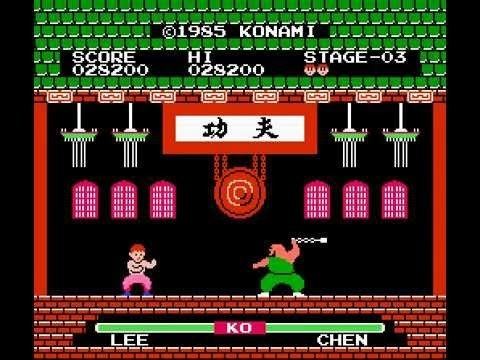8.6 /10 1 Votes
4.1/5 Let's Play SEGA Initial release date 1985 | 4.4/5 Emuparadise Series Oretachi Gēsen Zoku | |||||||||||||||||||||||||||||||||
 | ||||||||||||||||||||||||||||||||||
Mode(s) One or two players (alternating turns) Similar Kung‑Fu Master, Antarctic Adventure, Road Fighter, Circus Charlie, Track & Field | ||||||||||||||||||||||||||||||||||
Yie ar kung fu one credit clear
Yie Ar Kung-Fu (イー・アル・カンフー, Ī Aru Kanfū) is a 1985 arcade fighting game developed and published by Konami. Along with 1984's Karate Champ, which influenced Yie-Ar Kung Fu, it is one of the games that established the basis for modern fighting games.
Contents
- Yie ar kung fu one credit clear
- Yie ar kung fu arcade video game years 1985
- Gameplay
- Characters
- Ports and related releases
- Reception
- Sequel
- References

Yie ar kung fu arcade video game years 1985
Gameplay

Yie Ar Kung-Fu (Chinese: 一二功夫; pinyin: yī èr gōngfū; literally: "One Two Kung Fu") features the protagonist Oolong (Chinese: 烏龍; pinyin: Wūlóng, Japanese: ウーロン Ūron; see oolong) (renamed Lee for the MSX and Famicom ports), controlled by the player. Oolong must fight all the martial arts masters given by the game (11 in the arcade version; five to 13 in the home ports) to win the title of "Grand Master" and honor the memory of his father. On his side is a variety of punch and kick blows reachable by combining the joystick with one of the buttons (punch or kick). He also has the greatest jumping ability of all the game's fighters, with the exception of "Blues".

The player faces a variety of opponents, each with a unique appearance and fighting style. The player can perform up to 16 different moves, using a combination of buttons and joystick movements while standing, crouching or jumping. Moves are thrown at high, middle, and low levels. Regardless of the move that defeated them, male characters (save Feedle) always fall unconscious lying on their backs with their legs apart (players flail their feet), and female characters always fall lying on their sides. Feedle disappears. There are only two female fighters, and the rest are male. When a player gains an extra life, the word "xiè xiè" (Mandarin for "thank you") is heard.
Characters
The martial arts masters are listed below (in fight order):

The MSX and NES port has many differences from its arcade counterpart. The hero is called Lee and faces only five opponents:
There are two hidden characters in Konami Collector's Series: Arcade Advanced for the Game Boy Advance. To have access to them, the player must input the famous Konami Code at the title screen. The characters are available in the special two-player mode found on this collection. The fighters are Bishoo (a woman dressed in white who attacks with daggers) and Clayman (a living statue who attacks with a sword bigger than Sword's). A hidden character in the mobile phone version is Katana, a samurai who attacks with a katana.
Ports and related releases
Yie Ar Kung-Fu was subsequently widely ported to platforms including the MSX, NES, Commodore 64, ZX Spectrum, Amstrad CPC and BBC Micro.
An emulated version of the game was released in 2005 for PlayStation 2 in Japan as part of the Oretachi Geasen Zoku Sono-series.
It was released on Xbox Live Arcade for the Xbox 360 on July 18, 2007 with updated graphics and for the Nintendo DS in Konami Classics Series: Arcade Hits.
In recent years, this game was re-released on some TV game products. In 1987, the game was included on the compilation Konami Coin-op Hits with Hyper Sports, Green Beret and Mikie.
The Game Boy Advance version was relaunched for the Game Boy Color (as a part of Konami GB Collection Vol. 4), Sega Saturn and PlayStation.
The arcade version of Yie Ar Kung-Fu was made available on Microsoft's Game Room service for its Xbox 360 console and for Windows-based PCs in July 2010.
The arcade version of ' 'Yie Ar Kung-Fu' ' as a virtual cabinet with the full game was an available for the user's personal space known as the ' 'Konami retro Home arcade games' ' on the now defunct PlayStation Home which was on PlayStation3
The MSX Version of Yie Ar Kung-Fu was made like EGG Project for Windows Store on October 28, 2014 in Japan.
Reception
The game was a commercial success in Europe. It went to number 2 on the UK sales charts, behind Capcom's Commando. Yie Ar Kung Fu went on to become the second best-selling computer game of 1986 in the United Kingdom, at number-two on the overall 1986 chart.
Sequel
A sequel, Yie Ar Kung-Fu II, was released a year later. The sequel was released only for home computers and was never ported to the arcades. Another fighting game by Konami, Martial Champion, was originally planned to be released as Yie Ar Kung-Fu 2. In fact, Jin, the protagonist of Martial Champion, was modeled after Lee, the protagonist of the NES and MSX versions, and after Ryu from the 1987 Street Fighter arcade game.
